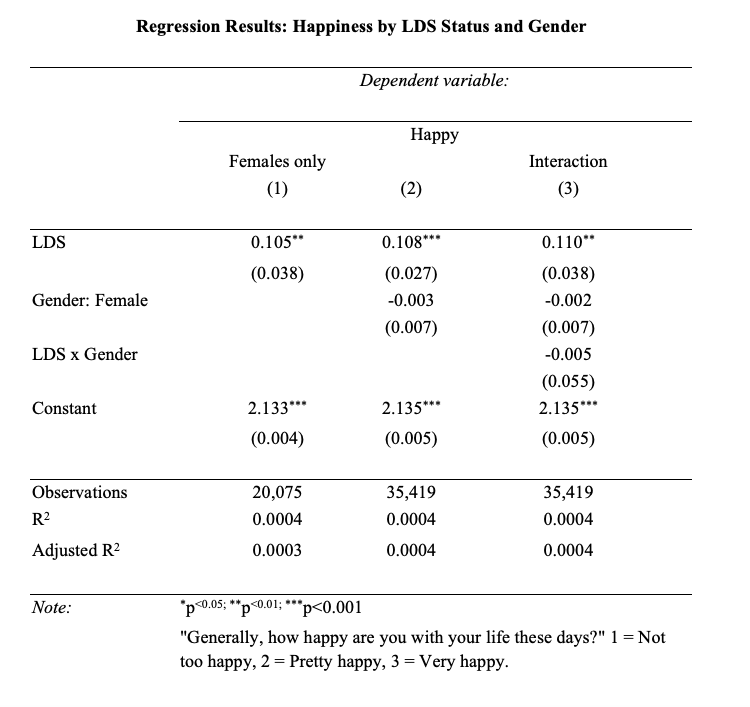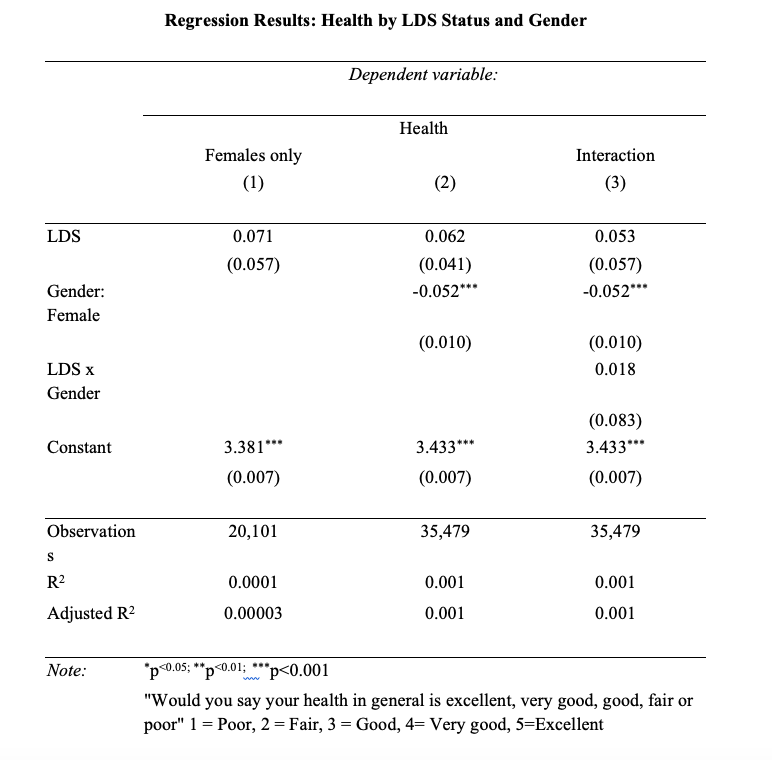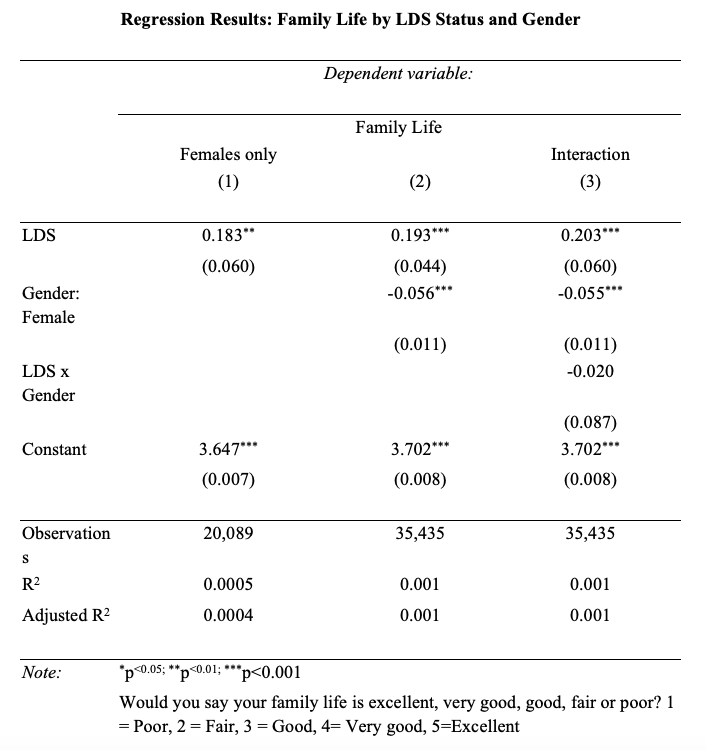Are Latter-day Saint Women Happy, Healthy, and Thriving? Recently I posted a piece that analyzed the recently released Pew Religious Landscape Data to measure whether former, lifelong, and convert Latter-day Saints reported being happier, healthier, and having better family lives, finding that that was indeed the case.
However, another piece asked the interesting question as to whether this applied to women in particular. The gender differential analysis wasn’t the original emphasis of my piece, but it’s a good question.
On one hand growing up to Utah I’m used to hearing the juxtaposition about frazzled religious housewives chained to their kitchens while Sex in the City type gentiles live freewheeling liberated professional lives where they answer to no man in their professional or dating lives and their Mr. Darcey lies waiting in the wings … (I’m exaggerating a little for effect. But only a little). The trope of the depressed religious–and by extension Latter-day Saint–woman looms large in our popular gendered discourse.
But is it true? This can essentially be broken down into two separate questions.
- Are Latter-day Saint women happier than non-Latter-day Saint women?
- Is the Latter-day Saint effect in happiness the same for men as it is for women?
While some might see these as asking the same question, a careful read will show that’s not the case. For example, Latter-day Saint women could be much happier than their non-Latter-day Saint counterparts, but Latter-day Saint men could be much, much happier than their non-Latter-day Saint counterparts.
Again, one sometimes hears that the benefits of the Church accrue particularly to men. Of course I as a man am happy in the Church, I might become a bishop and make decisions about my ward! (Obviously I’m being facetious, but the gendered narrative about what is supposed to make us happy is real). To test this out I will perform an interaction analysis, where I look at whether the “Latter-day Saint” happiness effect is bigger or smaller for men than it is for women.
There are 3 flourishing measures that we will measure:
- “Generally, how happy are you with your life these days?” [Very happy, pretty happy, not too happy]
- “Would you say your health in general is excellent, very good, good, fair or poor”
- “Would you say your family life is excellent, very good, good, fair or poor?”
In the original post I dichotomized the variable to just look at the highest level, since such charts are more comprehensible for a lay audience, but if we are going to test interactions we need to take advantage of all the variation in the question, so for this analysis I am using the dependent variables on a continuos measure. This also has the advantage of allowing us to run a simple linear regression.
The tables for the regressions are in the Appendix. What do they say? Women in general report being about as happy as men, and are less healthy and less satisfied with their family lives than men, which is itself noteworthy.
However, in regards to the Latter-day Saint effect, when we subsample and only take the women in the subsample, Latter-day Saint women are indeed happier than non-Latter-day Saint women. Specifically, they score about .1 points higher on a 3-point happiness scale. They also score higher on family life quality (.18 points higher on a five-point scale), but they don’t score higher on health.
To the second question, is there something particular to women? I don’t find any evidence for that. It looks like Latter-day Saint women are beneficiaries of a generic Latter-day Saint effect. None of the interaction effects are significant. Now, interaction effects are hard to get significant results for, you either need a really large sample size, which we don’t have, or a huge effect size. So we can say that the Latter-day Saint effect isn’t tremendously different between men and women, but admittedly in the same way that a middle school microscope can’t see atoms, we could be missing smaller differences.
And what about non-binary folks? There are only two Latter-day Saints in this sample that identify as non-binary, so not enough to do anything with statistically.
So, in conclusion, yes, Latter-day Saint women do appear to be happier and to report better family lives than non-Latter-day Saint women (although they do not report any better health). Furthermore, the flourishing bump they get from Church membership doesn’t appear to be any different, as far as we can tell, from the bump that men get, but by the same token we can’t argue that the Church is particularly deleterious to women more than it is to men in regards to these variables.
Code here.
Appendix



![]()
Full Citation for this Article: Cranney, Stephen (2025) "Are Latter-day Saint Women Happy, Healthy, and Thriving?," SquareTwo, Vol. 18 No. 2 (Summer 2025), http://squaretwo.org/Sq2ArticleCranneyLDSWomen.html, accessed <give access date>.
![]() Would you like to comment on this article? Thoughtful, faithful comments of at least 100 words are welcome.
Would you like to comment on this article? Thoughtful, faithful comments of at least 100 words are welcome.